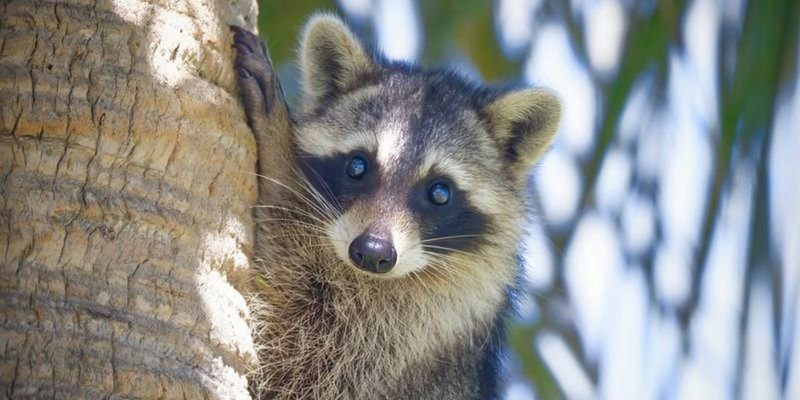
Let’s grab a coffee and dive into some of these misunderstandings. Think of raccoons like the misunderstood kid in class who’s just trying to fit in but is often seen as trouble. In this article, we’ll debunk these myths and offer a clearer picture of what raccoons are really like—quirks, behaviors, and all.
Myth 1: Raccoons Are Just Pests
You might think of raccoons solely as pests raiding your garbage bins. While it’s true that raccoons can cause havoc in urban settings, labeling them as “just pests” overlooks their fascinating characteristics. Raccoons are naturally curious animals driven by their instincts to explore. Their nimble paws and dexterous fingers allow them to open containers and rummage through leftovers, which makes them seem like thieves in the night.
However, it’s important to note that raccoons play a vital role in the ecosystem. They help control insect populations and disperse seeds, contributing to a healthier environment. So, while they might make a mess now and then, they’re also doing some good—like that friend who eats all your snacks but also brings the best pizza to the party.
Myth 2: Raccoons Only Come Out at Night
Another common belief is that raccoons are strictly nocturnal creatures—and while they primarily operate during the night, they can become active at any time of day. This myth likely stems from their body’s adaptations. Raccoons have excellent night vision, allowing them to forage effectively when most predators are asleep. However, it isn’t uncommon to see a raccoon scavenging for food in the early morning or late afternoon.
Think of raccoons as flexible adventurers. They can adapt to the circumstances, and if there’s food around, they’re going to seize the opportunity! So, if you spot one during the day, don’t panic; it’s just taking advantage of its surroundings.
Myth 3: Raccoons Are Dirty Animals
You might hear that raccoons are dirty animals because of their foraging habits. The truth is, raccoons are quite meticulous with their cleanliness. They often wash their food in water before eating it, an action that has led to the common myth of “raccoon handwashing.” This behavior isn’t just for show—it’s a way for them to inspect their food and ensure it’s safe.
Let’s face it: would you want to eat something that looks questionable? Raccoons, with their sense of touch and need for cleanliness, are a bit like us in that regard. They care about what they consume, showing that there’s more depth to these furry guys than just scavenging for scraps.
Myth 4: Raccoons Are Dangerous to Humans
Sure, raccoons can carry diseases like rabies, which often leads to fear and a belief that they’re dangerous. Here’s the thing: most raccoons are not aggressive unless they feel threatened. They typically avoid human interaction. If you see one, more often than not, it’s trying to mind its business, just like you when you’re in a crowded room.
It’s essential to respect wild animals and keep a safe distance. If a raccoon feels cornered, it may act defensively. But generally speaking, if you give them space, they’ll simply scurry off, leaving you to your peaceful evening. Remember, they’re not out to get you; they’re just trying to get by.
Myth 5: Raccoons Are Loners
Another common misconception is that raccoons live solitary lives. In reality, raccoons are quite social, especially among family groups. Mother raccoons will raise their kits together and teach them survival skills. You might even see a few siblings hanging out together as they explore their surroundings.
Think of them as a small, raucous family unit that enjoys each other’s company. They communicate with a variety of sounds, like purring, growling, and even chirping! This social aspect is often overshadowed by their bandit reputation, but it’s an essential part of their behavior.
Myth 6: All Raccoons Are the Same
Raccoons come in various shapes, sizes, and colors, depending on where they live. While the classic gray-and-black variety is the most recognized, there are variations, including albino raccoons, which are rare but do exist. These differences aren’t just for looks—they can also influence behavior and adaptability to different environments.
So, next time you see a raccoon, take a moment to appreciate its uniqueness. Much like people, raccoons can vary greatly, and understanding these nuances adds depth to our appreciation of wildlife.
Myth 7: Raccoons Will Always Steal from You
It’s easy to assume that a raccoon’s presence means your belongings are at risk. However, raccoons are opportunistic feeders, meaning they’ll go for what’s easiest to access. If they can find food in nature, they’ll take that over rummaging through your trash.
However, if your garbage is their best option, they’ll take it. You can mitigate this by securing your trash bins and keeping outdoor food sources covered. Think of it this way: if you provide a welcoming buffet, you can’t be surprised when guests show up.
Raccoons are fascinating creatures wrapped in layers of myths and misconceptions. By understanding their true nature, from their social habits to their environmental contributions, we can appreciate these clever animals rather than viewing them solely as pests. It’s essential to look beyond the surface and see the beauty in wildlife—even in the quirky raccoon.
The next time you encounter a raccoon, take a moment to observe without judgment. You might just find yourself appreciating their cleverness and adaptability. After all, isn’t understanding and compassion what makes our world a little bit brighter?

